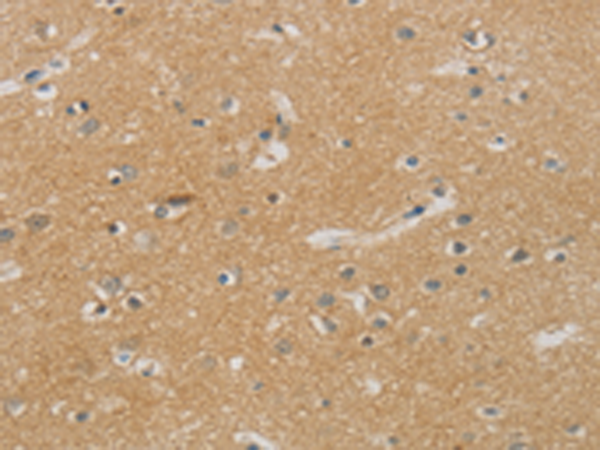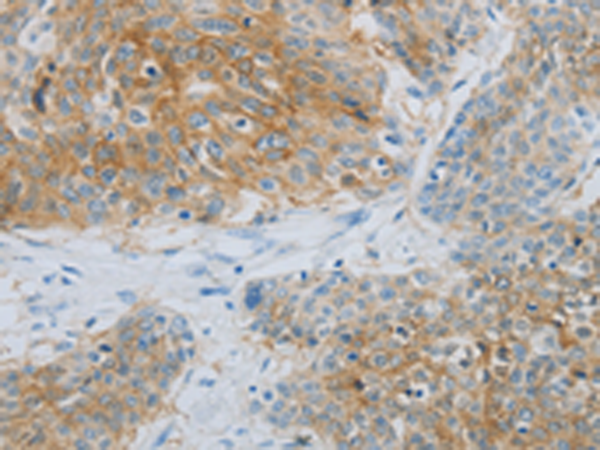


| WB | 咨询技术 | Human,Mouse,Rat |
| IF | 咨询技术 | Human,Mouse,Rat |
| IHC | 1/50-1/200 | Human,Mouse,Rat |
| ICC | 技术咨询 | Human,Mouse,Rat |
| FCM | 咨询技术 | Human,Mouse,Rat |
| Elisa | 1/2000-1/5000 | Human,Mouse,Rat |
| Aliases | GC4, RTP, DRG1, NDR1, NMSL, TDD5, CAP43, CMT4D, DRG-1, HMSNL, RIT42, TARG1, PROXY1 |
| WB Predicted band size | 43 kDa |
| Host/Isotype | Rabbit IgG |
| Antibody Type | Primary antibody |
| Storage | Store at 4°C short term. Aliquot and store at -20°C long term. Avoid freeze/thaw cycles. |
| Species Reactivity | Human, Mouse, Rat |
| Immunogen | Synthetic peptide of human NDRG1 |
| Formulation | Purified antibody in PBS with 0.05% sodium azide and 50% glycerol. |
+ +
以下是3篇关于NDRG1抗体的代表性文献,按您的要求整理:
---
1. **文献名称**: *NDRG1 as a biomarker for metastasis and clinical outcomes in colorectal cancer*
**作者**: Liu Y, et al.
**摘要**: 研究通过免疫组化(使用NDRG1抗体)分析结直肠癌组织中NDRG1表达,发现其高表达与肝转移和不良预后相关,提示NDRG1可作为转移标志物。
2. **文献名称**: *Role of NDRG1 in Schwann cell differentiation and peripheral nerve regeneration*
**作者**: Okuda T, et al.
**摘要**: 利用NDRG1抗体进行Western blot和免疫荧光,发现NDRG1在雪旺细胞分化中调控髓鞘形成,缺失导致周围神经再生障碍。
3. **文献名称**: *NDRG1 suppresses prostate cancer progression by controlling hypoxia-induced autophagy*
**作者**: Chen Z, et al.
**摘要**: 通过NDRG1抗体检测低氧条件下前列腺癌细胞中蛋白表达,揭示NDRG1通过抑制自噬通路延缓肿瘤生长,为潜在治疗靶点。
---
以上文献均基于NDRG1抗体的实验技术(如免疫组化、Western blot)展开机制或临床研究,涉及癌症、神经科学等领域。如需具体期刊或年份信息,可进一步补充检索。
The NDRG1 (N-myc downstream-regulated gene 1) antibody is a crucial tool for studying the NDRG1 protein, a member of the NDRG family involved in diverse cellular processes, including stress response, differentiation, and metastasis suppression. NDRG1 is ubiquitously expressed but shows elevated levels in tissues like the prostate, kidney, and brain. Its expression is regulated by hypoxia-inducible factor 1α (HIF-1α), metal ions (e.g., iron, nickel), and cellular stressors, linking it to hypoxia-driven pathways and metal metabolism. Research highlights its dual role as both a tumor suppressor and promoter, depending on context. It inhibits metastasis in prostate, breast, and colorectal cancers but may promote progression in pancreatic or liver cancers.
NDRG1 antibodies are widely used in Western blotting, immunohistochemistry (IHC), and immunofluorescence (IF) to detect protein expression, localization, and post-translational modifications. They help identify NDRG1’s involvement in diseases, including cancer, neurodegenerative disorders (e.g., Alzheimer’s), and iron-related conditions. In diagnostics, NDRG1 upregulation in prostate cancer correlates with androgen receptor signaling, making it a potential biomarker. Commercially available antibodies target specific epitopes (e.g., C-terminal regions) and vary by clonality (monoclonal/polyoclonal), requiring validation for experimental consistency. Challenges include cross-reactivity and tissue-specific expression patterns, necessitating careful optimization for accurate interpretation.
×